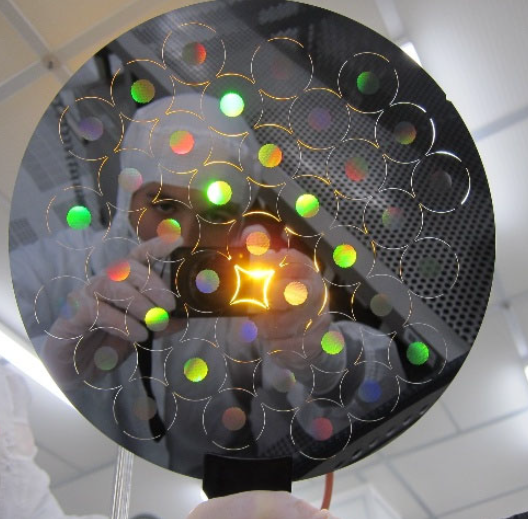Size is important
Precision filters for invisible hazards
As part of the project, the Fraunhofer Institute for Silicon Technology (ISIT) and the Alfred Wegener Institute (AWI) are working together on the development of silicon filters with nanopores. These filters are designed to extract tiny plastic particles from environmental samples and thus enable more precise analysis than previous methods. Unlike conventional filter materials, which are often made of plastic themselves and have randomly distributed pores, the silicon membrane offers uniformly arranged pores at defined intervals. This facilitates the identification of nanoplastics and avoids potential contamination by filter materials. The production of the filters is based on proven semiconductor technologies that enable comparatively high precision.
The ability of the filters to reliably separate particles with a size of just a few hundred nanometers is particularly innovative. The pore size can be precisely controlled so that both microplastics and nanoplastics can be detected. Thanks to the even distribution of the pores, the number of particles on the filter surface can be quantified, enabling a more accurate risk assessment. The silicon surface also enables clear particle visualization and spectroscopic analysis methods, such as Fourier transform infrared spectroscopy (FTIR) and Raman spectroscopy, which are used to identify the plastic particles.
Cooperation for innovative environmental technologies
The project is based on close cooperation between research institutions and industrial partners and is funded by WTSH - Wirtschaftsförderung und Technologietransfer Schleswig-Holstein GmbH. In addition to ISIT and AWI, Smartmembranes GmbH is also involved, which is driving forward the commercial exploitation of the filter technology. While ISIT is responsible for filter development and production, AWI is concentrating on evaluating the filters in real environmental samples along the coasts of Schleswig-Holstein. The collaboration enables a comprehensive risk assessment of the spread of nanoplastics in the environment. The results of the project could set new standards in environmental analysis in the long term. By making the filters available to research institutions, universities and companies in Schleswig-Holstein, regional innovative strength is strengthened. With the successful implementation of this project, the partners are making an important contribution to solving one of the biggest environmental problems of our time.

 Fraunhofer Institute for Silicon Technology
Fraunhofer Institute for Silicon Technology